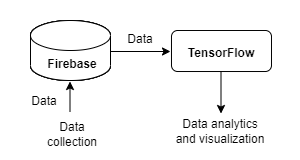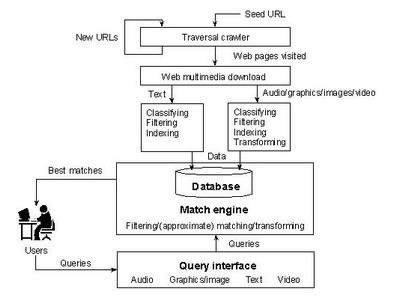|
|||||||||
|---|---|---|---|---|---|---|---|---|---|
| Software/Tools | MySQL | Oracle | Perl | PHP | SQL | ||||
| W3Schools | Web (Oracle) | Web (MySQL) | Emacs | Linux | |||||
|
Data Retrieval & Mining |
Information Retrieval I |
Information Retrieval II |
Search Engines |
Text Analysis |
PageRank | ||||
| Machine Learning | Data Mining | Kardi Teknomo | ANN | ||||||
| Google APIs | Firebase | TensorFlow | G4G TF | G4G Firebase | W3S TF | ||||
| General Information | Discord | EE/CS Wiki | EITS | UND help | Stack Overflow | ||||
| Syllabus: Spring 2026 | Credit hours: 3 | |
| Class times: 03:30pm – 04:45pm, TuTh | Classroom: Harrington Hall 324 | |
| Class # (on-campus: 515-01): 25393 | Class # (on-line: 515-02): 25394 | |
| Instructor: Wen-Chen Hu (my teaching philosophy) | Office: Upson II 366K | |
 Email: wenchen@cs.und.edu Email: wenchen@cs.und.edu
|
||
| Office hours: 02:30pm – 04:00pm, MoWeFr | ||
| Prerequisite: CSCI 513 Advanced Database Systems or consent of the instructor | ||
Lecture notes: No textbook will be used. Instead award-winning, interactive, informative, and practical lecture notes (based on books, papers, online documents, and user manuals) and detailed and precise class instructions will be provided. Collectively, the lecture notes and instructions are more like a small book, which supplies much more information than regular notes do and makes the subject studies much easier. Students will not have problem learning the subjects or taking the exams after studying them and doing programming exercises.
Grading: |

|
Announcements:
- Updated constantly: Class notes
- Thursday, February 19 (soft): Programming Exercise I due
- Tuesday, January 13: Programming Exercise I posted
- Monday, January 12: Register this course via Course Registration.
Tentative Schedule:
Week |
Class | Topic | Due | Where | ||||
|---|---|---|---|---|---|---|---|---|
| 0 | 0. Computer Career and Data Research & Technologies | |||||||
| 0.1 A computer career | ||||||||
| 0.2 Data research | ||||||||
| 0.3 Data technologies | ||||||||
| 1 | 01/13 01/15 |
1. Introduction to CSCI 515 | ||||||
| 1.1 Course introduction |  |
|||||||
| 1.2 Data life cycle | ||||||||
| 1.3 Topics covered | ||||||||
| 2 | 01/20 01/22 |
2. Programming Exercise I | ||||||
| 2.1 Specifications | ||||||||
| 2.2 Web page download | ||||||||
| 2.3 Code sample | ||||||||
| 01/22 |
Last day to add a course or drop without record Last day to add audit or change to/from audit Last day to receive a refund on a dropped class Drops after the last day to add will appear on a transcript. |
|||||||
| 3 | 01/27 01/29 |
3. Essential Technologies for Exercise Construction | ||||||
| 3.1 Essential software and tools | ||||||||
| 3.2 Using Linux | ||||||||
| 3.3 Writing HTML scripts | ||||||||
| 4 | 02/03 02/05 |
4. PHP (HyperText Preprocessor) | ||||||
| 4.1 LAMP | ||||||||
| 4.2 PHP | ||||||||
| 4.3 MySQL | ||||||||
| 5 | 02/10 02/12 |
5. Web Search Services | ||||||
| 5.1 The World Wide Web | ||||||||
| 5.2 Web page information | ||||||||
| 5.3 Web search methods | ||||||||
| 6 | 02/17 02/19 |
6. Information Retrieval (IR) | ||||||
| 6.1 Various IR methods | ||||||||
| 6.2 Automatic indexing methods | ||||||||
| 6.3 Data classification and clustering | ||||||||
| 7 | 02/24 | 7. The PageRank Algorithm | ||||||
| 7.1 Background | ||||||||
| 7.2 The PageRank algorithm | ||||||||
| 7.3 Computing PageRank scores | ||||||||
| 02/26 (no class) |
|
|||||||
| 8 | 03/03 03/05 |
8. Firebase Database Using Android | ||||||
| 8.1 Programming Exercise II | ||||||||
| 8.2 Introduction to Firebase | ||||||||
| 8.3 Using Firebase (Android) | ||||||||
| 9 | 03/09 – 03/13 |
|
||||||
| 10 | 03/19 | 10. Firebase Database Using JavaScript | ||||||
| 10.1 Using Firebase (JavaScript) | ||||||||
| 10.2 Structuring Firebase | ||||||||
| 10.3 Query Firebase | ||||||||
| 03/17 (no class) |
|
|||||||
| 11 | 03/24 03/26 |
11. TensorFlow | ||||||
| 11.1 Introduction to TensorFlow | ||||||||
| 11.2 TensorFlow.js models | ||||||||
| 11.3 A TensorFlow.js example | ||||||||
| 12 | 03/31 04/02 |
12. JavaScript | ||||||
| 12.1 JavaScript syntax | ||||||||
| 12.2 JavaScript instructions | ||||||||
| 12.3 JavaScript examples | ||||||||
| 13 | 04/07 04/09 |
13. Decision Trees | ||||||
| 13.1 Background | ||||||||
| 13.2 Measuring impurity | ||||||||
| 13.3 Information gain | ||||||||
| 04/10 |
Last day to change to or from S/U grading Last day to change to or from audit grading Last day to drop a full-term course or withdraw from school |
|||||||
| 14 | 04/14 | 14. k-Nearest Neighbors (kNN) Algorithm | ||||||
| 14.1 Background | ||||||||
| 14.2 kNN for prediction and smoothing | ||||||||
| 14.3 Strengths and weaknesses | ||||||||
| 04/16 (no class) |
|
|||||||
| 15 | 04/21 04/23 |
15. Artificial Neural Networks (ANNs) | ||||||
| 15.1 Artificial intelligence | ||||||||
| 15.2 Backpropagation | ||||||||
| 15.3 Genann: a minimal ANN | ||||||||
| 16 | 04/28 04/30 |
16. Data Processing and Management | ||||||
| 16.1 Data science | ||||||||
| 16.2 Data warehouse | ||||||||
| 16.3 Data fusion | ||||||||
| 17 | 05/05 05/07 |
17. Data Mining Concepts | ||||||
| 17.1 Introduction to data mining | ||||||||
| 17.2 Data mining steps | ||||||||
| 17.3 Data mining techniques | ||||||||
| 18 | 05/14 |
|
||||||
| 19 | 05/19 | Grades posted before noon, Tuesday |
- Network administrator (not developer; average salary: $74,376)
- Computer systems analyst (not developer; average salary: $79,891)
- Web developer (average salary: $77,791)
- Video game designer (average salary: $76,887)
- Information security analyst (not developer; average salary: $90,425)
- Database administrator/developer (average salary: $94,537)
- IT manager (not developer; average salary: $91,632)
- Business intelligence analyst (not developer; average salary: $87,886)
- Java developer (average salary: $106,611)
- Mobile application developer (average salary: $129,017)
- Developers:
- Positions (plenty): Developers of front-end and back-end web pages, mobile apps, and all kinds of software
- Skills (more stable): Programming languages (such as C++ and Java), web programming, mobile app development, data processing and management including databases, and data structures & algorithms
- Practitioners:
- Positions (not many): Experienced personnel like data scientists, database or system administrators, security analysts, and network architects (more applications & configuration and less development)
- Skills (based on the needs of companies): Databases, data warehousing, data lake, Hadoop, MapReduce, Linux, SPSS, SAS, Cogno, Matla, Taleau, etc.
- Researchers:
- Industrial positions (few and based on the needs of corporations): High quality personnel required for the advanced areas like artificial intelligence, security, computer vision, autonomous driving, and speech recognition
- Academic positions/trends (few and changed according to the government policies): ❓ ⇐ artificial intelligence ⇐ big data ⇐ high-performance computing ⇐ security ⇐ (mobile) networks
Remark I: Terminologies and definitions will be discussed minimally in this course. Instead, effective methods and practical works will be emphasized and enforced.
Remark II: Unlike the disciplines such as databases or the World Wide Web, data engineering and management (DEM) is one of the disciplines (like image processing or artificial intelligence) without coherent methods or algorithms. Many methods (such as artificial neural networks or relevance feedback) are used by DEM and each method is usually not closely related to other methods (like decision trees or sequential pattern mining).
Remark III: A wide variety of methods have been used by DEM, and the current methods are rather complicated. In order to show what the data engineering and management (DEM) is in a semester, this course has to pick a small number of fundamental topics, instead of many advanced topics, to investigate. Students then use the training to revise the appropriate methods for the problems they encounter in the future.
Remark IV: The DEM is a well-developed subject, and it is not easy to find a brand-new method. On the other hand, artificial intelligence (AI), data mining (DM), machine learning (ML), or information retrieval (IR) has plenty of methods available to be used or adopted. In order to take the advantages from both, the DEM borrows many methods from AI/DM/ML/IR. However, the DEM is not the same as AI/DM/ML/IR because of the problem of data processing. That is a data research topic may consist of two parts: DEM and AI/DM/ML/IR, and you want to put an emphasis on the former instead of the latter because the DEM is more useful and practical.
Instructor’s qualification: The instructor’s current research includes mobile computing and information retrieval. He has applied various information retrieval methods (such as artificial neural networks, finite-state machines, and association-rule and sequential-pattern mining) to mobile applications and web searches. The instructor has published more than 100 research publications and advised more than 50 graduate students. Most of the research topics are related to (mobile) data engineering and management.
University of North Dakota Course Description (CSCI 515) —
This course studies theoretical and applied research issues related to data
engineering, management, and science. Topics will reflect state-of-the-art
and state-of-the-practice activities in the field. The course focuses on
well-defined theoretical results and empirical studies that have potential
impact on data acquisition, analysis, indexing, management, mining,
retrieval, and storage.
Data Science from Wikipedia —
Data science is an interdisciplinary field about scientific methods, processes, and systems to extract knowledge or insights from data in various forms, either structured or unstructured, similar to data mining.
It employs techniques and theories drawn from many fields within the broad areas of mathematics, statistics, information science, and computer science, in particular from the subdomains of machine learning, classification, cluster analysis, data mining, databases, and visualization.
Data Engineering from IEEE Computer Society Data Engineering Bulletin —
The role of data in the design, development, management and utilization of information systems:
|

|
Data Engineering from Data & Knowledge Engineering —
Data engineering is to identify, investigate and analyze the underlying principles in the design and effective use of database systems:
- Representation and manipulation of data,
- Architectures of database systems,
- Construction of databases,
- Applications, case studies, and management issues, and
- Tools for specifying and developing databases using tools based on linguistics or human machine interface principles.
Data management comprises all the disciplines related to managing data as a valuable resource:
|

|
Each student is required to build the following two systems:
- a focused web search engine based on a data life cycle and
- a data mining system using Firebase and TensorFlow.


|

|
An Internet-Enabled and Mobile Database Course Sequence —
This is part of an Internet/mobile-enabled database course sequence offered by me:
CSCI 260 .NET and World Wide Web Programming
⇓
CSCI 457 Electronic and Mobile Commerce Systems
⇓
DATA 520 Databases
⇓
CSCI 513 Advanced Database Systems
⇓
CSCI 515 Data Engineering and Management
- CSCI 260 (.NET and World Wide Web Programming) to build database-driven websites by using
- Microsoft SQL Server database,
- Microsoft ASP.NET,
- Microsoft C#,
- Microsoft .NET, and
- Microsoft Visual Studio.
- CSCI 457 (Electronic and Mobile Commerce Systems) to build electronic and mobile commerce systems by using
- Android programming,
- Android-server-database connection,
- (L) Linux operating system,
- (A) Apache web server,
- (M) MySQL database, and
- (P) PHP.
- DATA 520 (Databases) to build Internet/mobile-enabled database systems by using
- Android programming,
- Android-server-database connection,
- JDBC (Java Database Connectivity),
- Oracle database, and
- Relational database design and SQL.
- CSCI 513 (Advanced Database Systems) to build Internet-enabled and embedded database systems by using
- Android programming,
- Android SQLite embedded database,
- JDBC (Java Database Connectivity),
- Object-relational SQL and PL/SQL, and
- Oracle (an object-relational database).
- CSCI 515 (Data Engineering and Management) to build Internet-enabled data-mining systems to discover knowledge from a large set of data by using
- Data mining and knowledge discovery,
- Internet-enabled Firebase database,
- Information retrieval, and
- Internet-enabled TensorFlow.






